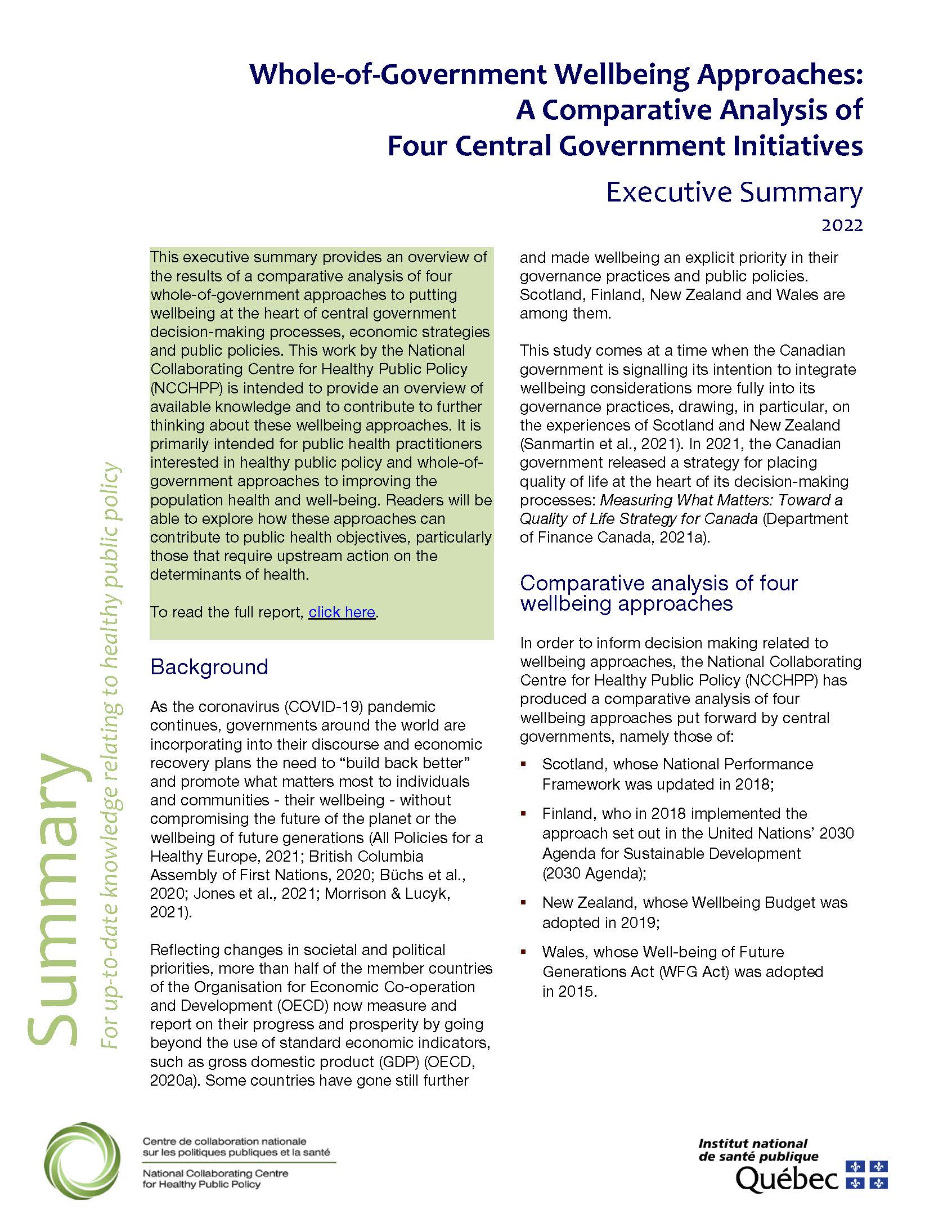Context
In Canada and elsewhere, the health and economic consequences of the COVID-19 pandemic have led governments to reflect on promising avenues to support an economic recovery focused on population health and wellbeing, sustainable development, and equity, including for future generations. In this regard, wellbeing approaches are innovative initiatives for incorporating wellbeing (or quality of life) indicators into policymaking and budget allocation processes. Among other things, they aim to guide and improve the intersectoral action needed to address population health and health inequalities. These approaches are starting to take hold in Canada, as illustrated by the federal government’s adoption of the Quality of Life Strategy for Canada.
Comparative analysis of four wellbeing approaches
In order to inform decision making related to wellbeing approaches, the NCCHPP has produced a comparative analysis of four wellbeing approaches put forward by the governments of Scotland, Finland, New Zealand, and Wales. This study allowed us to identify similarities and differences between these four approaches in the following areas:
- The wellbeing frameworks used;
- The main objectives pursued;
- The implementation, evaluation and accountability mechanisms;
- The roles of various actors, including those in public health;
- The difficulties encountered during implementation and the pathways to overcoming them.
To read the summary, click below:




